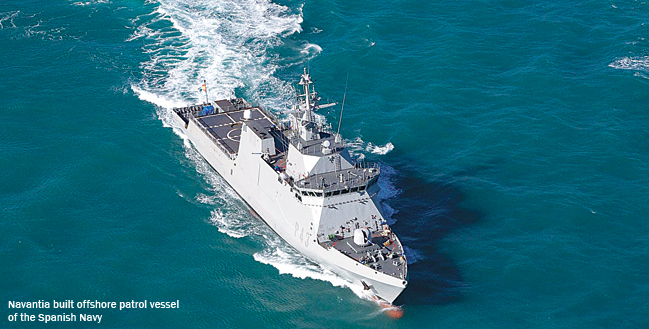INDIAN ARMED FORCES CHIEFS ON OUR RELENTLESS AND FOCUSED PUBLISHING EFFORTS

The insightful articles, inspiring narrations and analytical perspectives presented by the Editorial Team, establish an alluring connect with the reader. My compliments and best wishes to SP Guide Publications.

"Over the past 60 years, the growth of SP Guide Publications has mirrored the rising stature of Indian Navy. Its well-researched and informative magazines on Defence and Aerospace sector have served to shape an educated opinion of our military personnel, policy makers and the public alike. I wish SP's Publication team continued success, fair winds and following seas in all future endeavour!"

Since, its inception in 1964, SP Guide Publications has consistently demonstrated commitment to high-quality journalism in the aerospace and defence sectors, earning a well-deserved reputation as Asia's largest media house in this domain. I wish SP Guide Publications continued success in its pursuit of excellence.
- Appointments Committee of Cabinet approves one-month extension in service of Chief of the Army Staff
- Admiral Dinesh K. Tripathi assumes Command of the Indian Navy as 26th Chief of the Naval Staff
- Prime Minister witnesses 'Bharat Shakti' – a Tri-Services Firing and Manoeuvre Exercise in Pokhran, Rajasthan
- Interim Defence Budget 2024-25 — An Analysis
- Union Defence budget 2024
- Prime Minister Modi Commemorates Indian Navy Day in a Grand Ceremony
Approach to indigenisation

By José Luis Montes Martínez, General Manager, India Liaison Office, Navantia
The Indian defence policy of indigenisation by developing own materials, products and systems through a network of institutions and laboratories in the public domain and private companies either by own initiative or in close collaboration with public institutions, is a remarkable strategy to strengthen the industrial and technological capacity of the Nation and to create a solid base of experts, scientifics and professionals in all areas of the defence technology.
Care should be taken, nevertheless, when implementing such policy, as depending on the approach, the results could be very different. It is far from the author’s intention of this article to make any judgement about the suitability of the current policy. On the contrary, my only intention is to contribute through some comments based on my personal experience to the success of the indigenisation effort.
Technology in 21st century evolves to a dramatic speed, being the useful life of any development relatively short, thus making necessary a continuous R&D effort to keep own developments to state of the art technology.
Today, the success of any armed force in responding to threats is depending on issues like warfare strategic, training, troops, aircrafts and naval platforms available, but also and with an increasing importance on technology available to a particular armed force. Therefore, being in possession of an advance technology is a key element to get superiority in any conflict.
A suitable approach to the significant indigenisation effort being developed in India should take into account the above principle to get in the long term the expected results.
State-of-the-art technology is the result of a continuous loop of R&D. Getting a prominent position in any area of technology requires a long time staying in the development of such technology, with each new development based in life ending technology.
Technologies are available today to satisfy almost any defence needs, but what makes the difference is state of the art technology. When trying to get own technology, R&D efforts should be addressed in a way that the existing and well proven state of the art technology can be incorporated into own developments, therefore departing from a suitable base line which allows to satisfy today’s needs of armed forces in terms of being in possession of the most advance and reliable technology.
I wouldn’t like to finish this article without expressing that Navantia, as public company of Spain, a nation friendly to India, is at the disposal of the Indian armed forces to contribute to follow the straightest line in the process of getting the most advance technology and therefore allowing optimisation of R&D effort.






